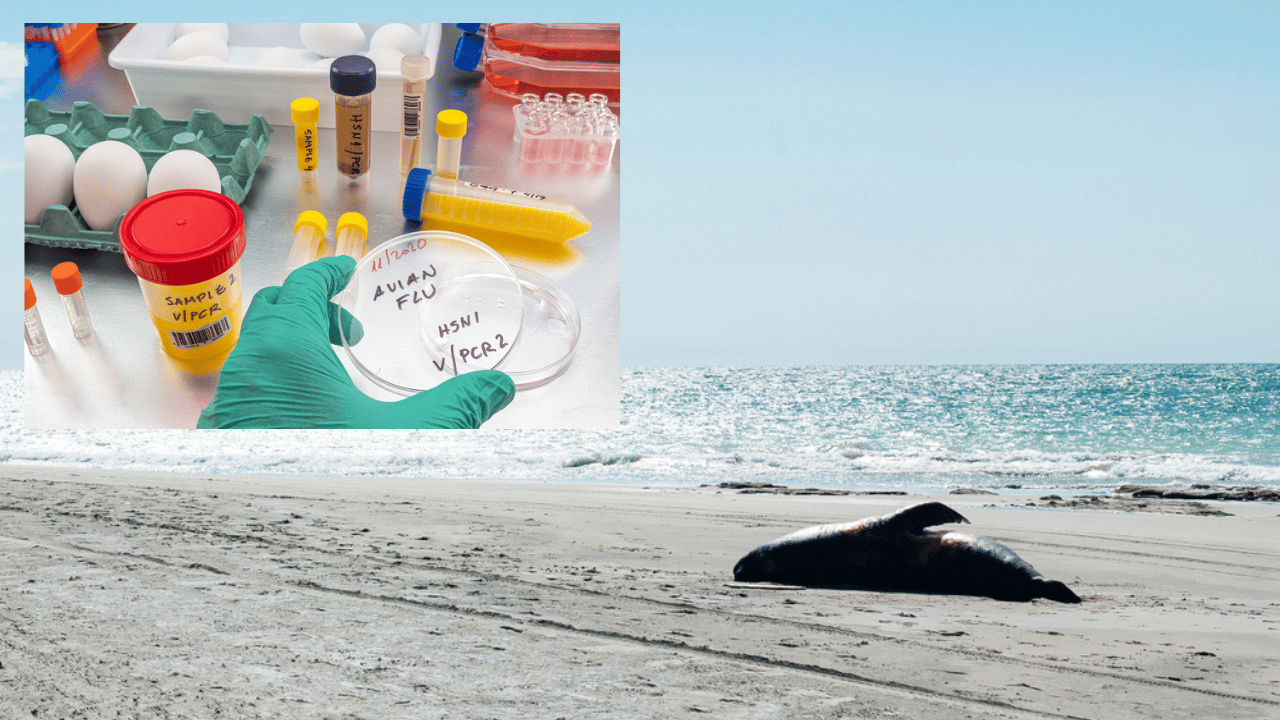Four dead seals have tested positive for bird flu in Scotland, as the number of cases of highly pathogenic avian flu in mammals continues to grow globally with experts warning of “a step-change” in its spread.
The largest-ever bird flu outbreak had already spilled over into otters and foxes in the UK, with about 70 mammals having tested positive for the (HPAI) H5N1 virus. The seal carcasses were sent for screening last year and the results have come back positive, according to the Scottish Marine Animal Strandings Scheme (SMASS).
“Three out of the four harbor seals and one of the two grey seals from 2021 and early 2022 tested positive for HPAIV H5N1,” said SMASS in a statement. The animals were found in Aberdeenshire, Highlands, Fife, and Orkney. “We also want to check our more recent cetacean cases for evidence of spillover,” it said.
As well as ripping through wild bird populations around the world, H5N1 has been found in dolphins, domestic cats, leopards and grizzly bears. Earlier this week the Peruvian government said nearly 580 sea lions had died from it in seven protected marine areas.
Generally, it is believed mammals are getting infected by scavenging on dead or sick wild birds, but sea lions live in colonies. This has raised concerns it could now be spreading within mammal populations in the wild.
Scientists are analyzing the genetic sequences of the virus in the colonies in Peru to establish if that is the case. “We need to wait for that analysis,” said Prof Ian Brown, the director of scientific services at the Animal and Plant Health Agency (Apha). “I think we need to be cautious before we assume viruses transmitting between the sea lions.”
It follows an outbreak at a mink farm in Spain, which was the first indication it could be spreading within mammal populations. It is believed the American mink were infected by H5N1 after coming into contact with wild gulls who were able to access their food. More than 50,000 mink were euthanised.
The evidence suggests it was spreading between the mink themselves, says Ursula Höfle, a research professor at the University of Castilla. “It looks like it was at least for this particular virus an isolated event,” she said. “We don’t really know, but there’s definitely increasing evidence for bird-to-mammal and mammal-to-mammal transmission.”
If it starts being able to spread between mammals there are concerns humans could be more vulnerable. “We’re seeing a bit of a step-change in the spread of this infection, and we shouldn’t sit idle because obviously, we know what happened with Covid,” said Brown.
He said it was possible to start taking preparatory steps for making a human vaccine for H5N1 but it would be “foolhardy” to make a vaccine now as it was impossible to know what strain might jump into humans, in the unlikely event that did happen.
The WHO director-general, Tedros Adhanom Ghebreyesus, said the situation “needs to be monitored closely” but the risk to humans remained low. Experts say the virus would probably require more than one or two changes for human-to-human transmission to be a real risk, but the impacts could be huge. There have been nearly 870 cases of bird flu in humans over the past 20 years and 457 were fatal, according to the WHO. (SOURCE)










